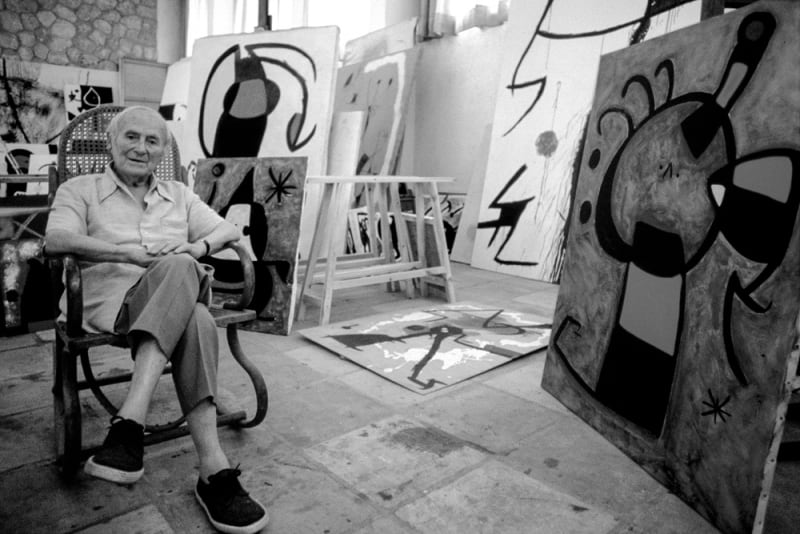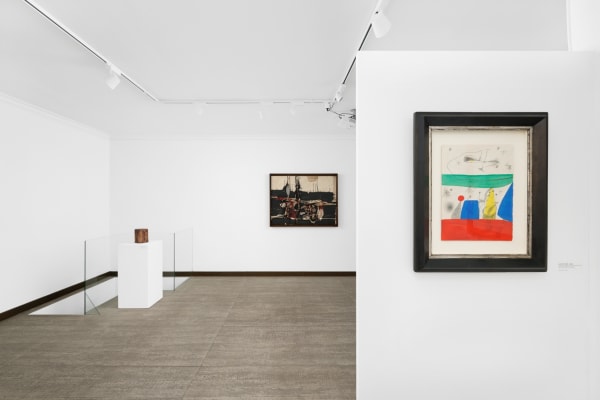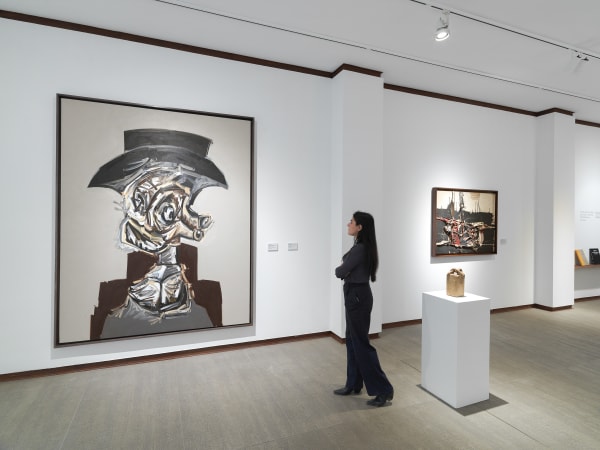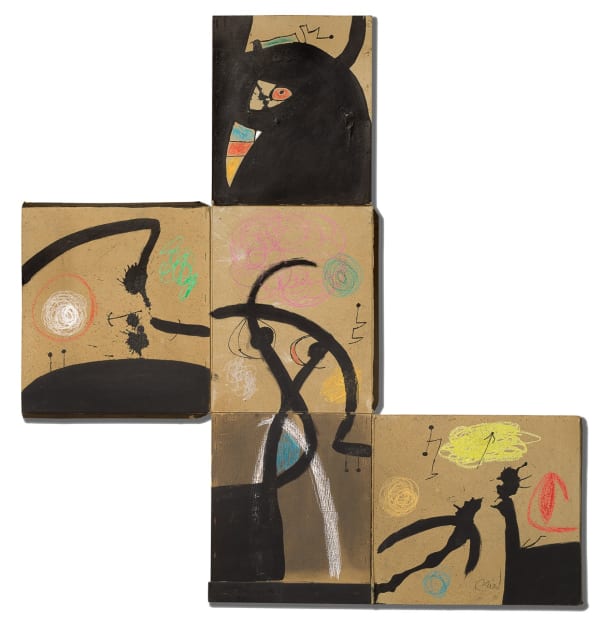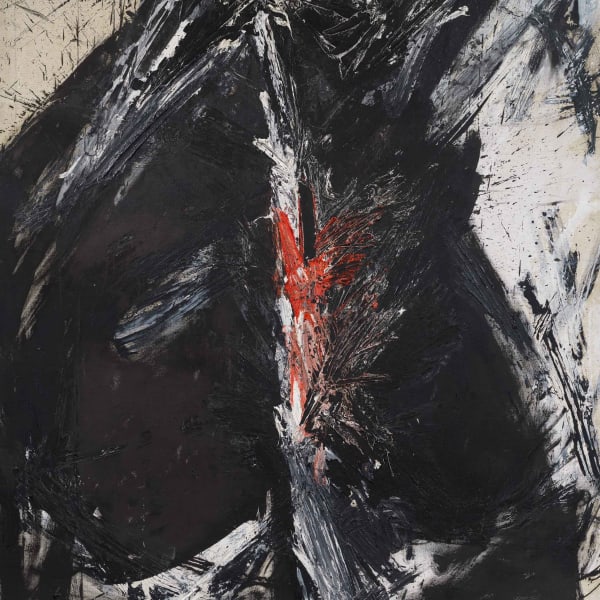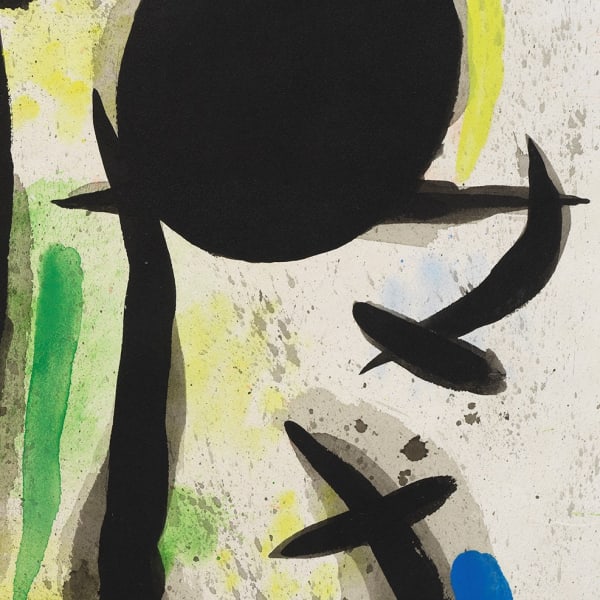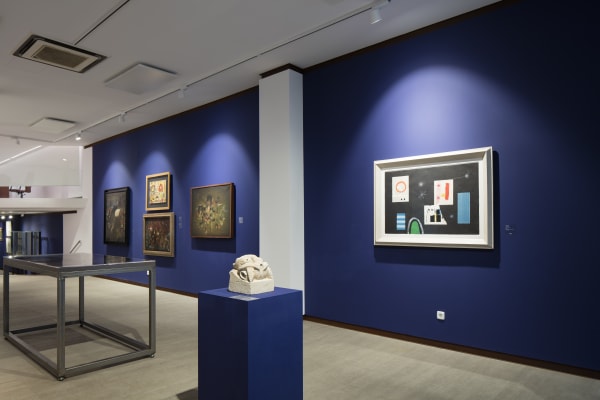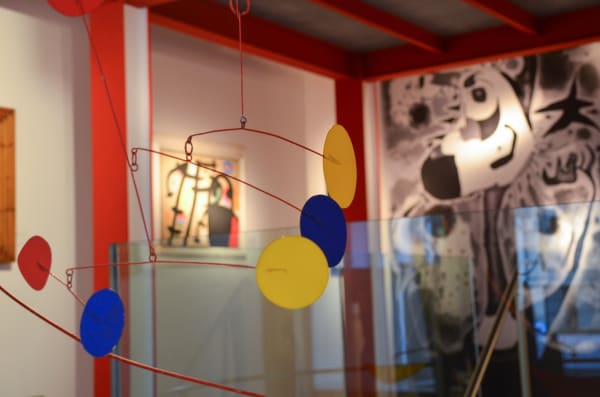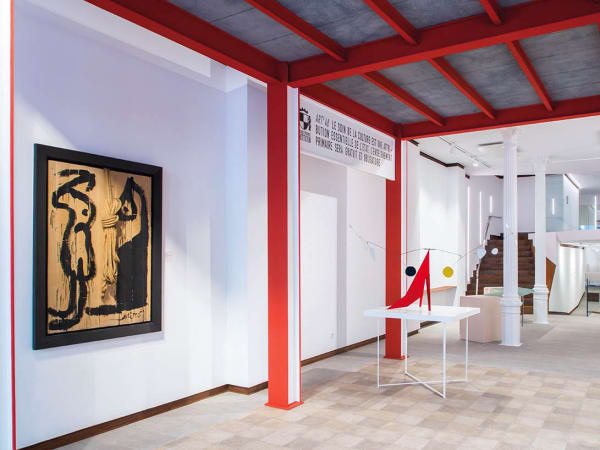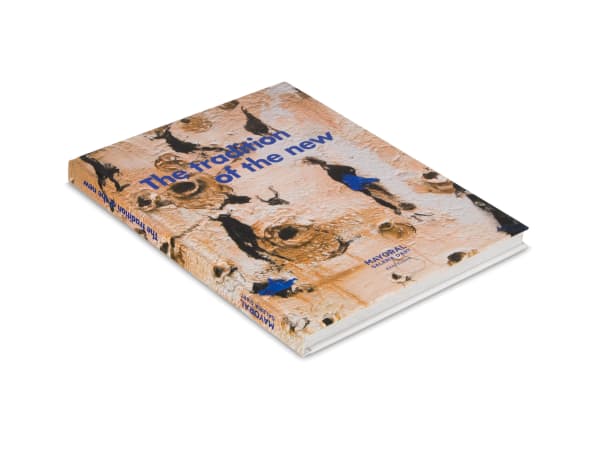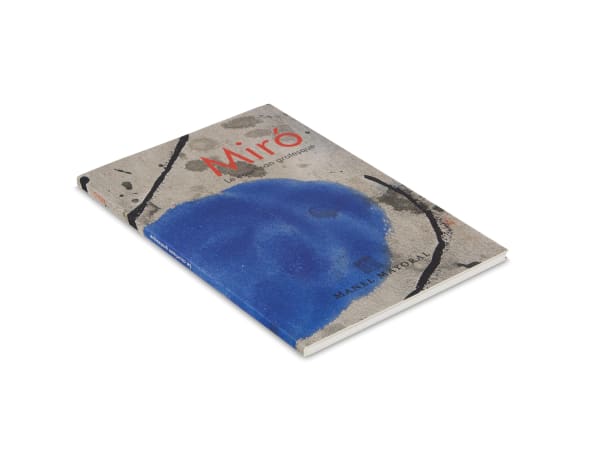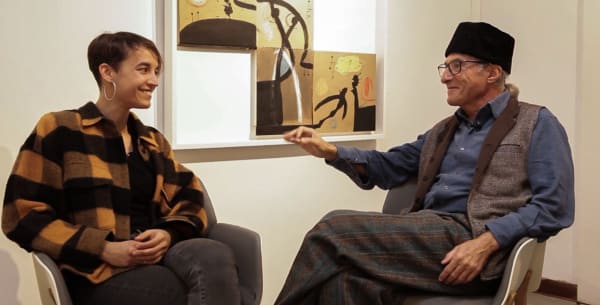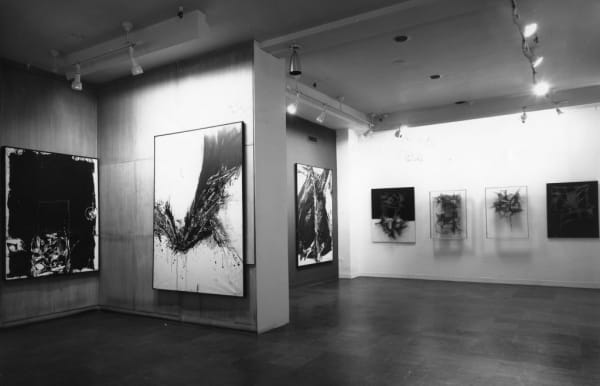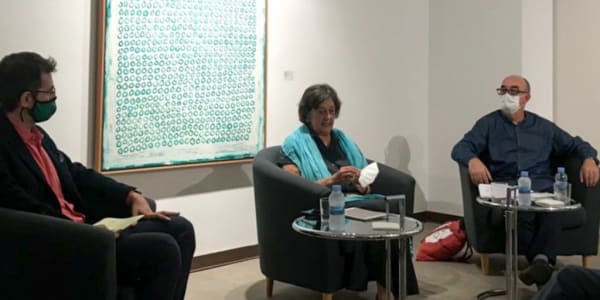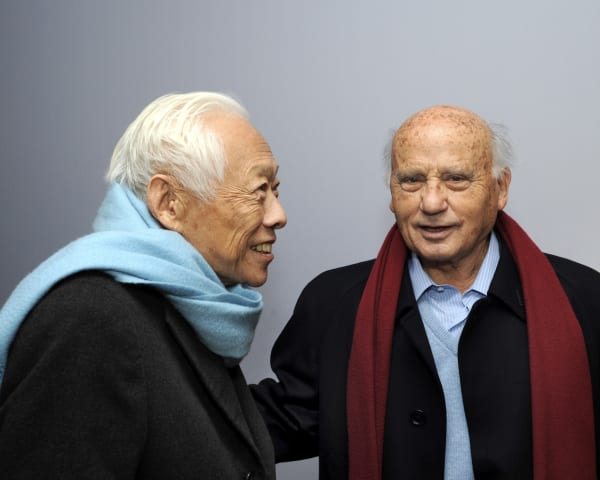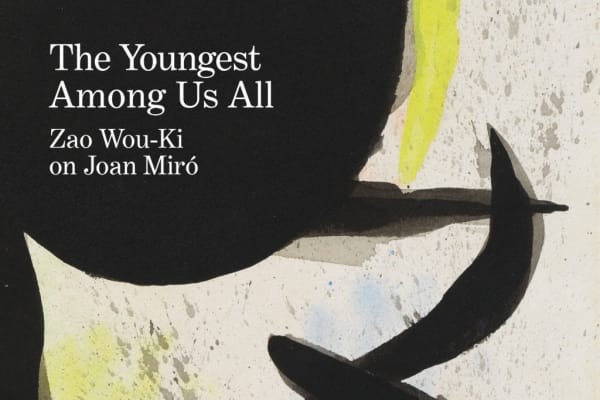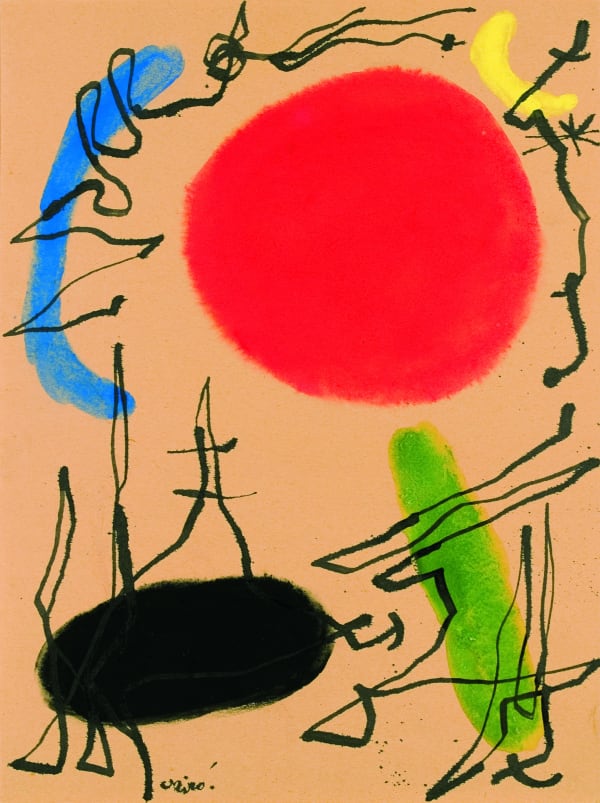Joan Miró Barcelona, 1893-Palma de Mallorca, 1983
“A painting must be fertile. It must give birth to a world. It doesn’t matter if it depicts flowers or people or horses, as long as it reveals a world, something alive. […] It must fertilize the imagination.”- Joan Miró
A major retrospective of his work at the New York MoMA in 1941, which brought him international acclaim, was the first of numerous Miró retrospectives around the world: at the Musée National d’Art Moderne in Paris (1962 and 1978), Tate Gallery in London (1964), Grand Palais in Paris (1974), Tate Modern in London (2011) and the Joan Miró Foundation in Barcelona (2011), to name just a few. The Joan Miró Foundation was opened in 1975, in a building designed by the architect Josep Lluís Sert in Barcelona, and in 1983 the Pilar and Joan Miró Foundation opened in Palma de Majorca.
-

RÊVE. SURRÉALISME ET RÉVOLTE DE L'ESPRIT
PARIS 25 Apr - 5 Jul 2024Humanity’s deep-rooted fascination for dreams experienced a turning point at the beginning of the 20th century after the publication of The Interpretation of Dreams, by Sigmund Freud (1900), a fundamental...Read more -

EXPLOSION
BARCELONA 11 Jan - 26 Mar 2024Mayoral brings together works by Joan Miró, Antonio Saura, Equipo Crónica, Eulàlia Grau, Antoni Tàpies, Manolo Millares, and Juana Francés presented through the gaze of two explosive scenes from Michelangelo...Read more -

Tàpies i Miró. We come from a silence
PARIS - BARCELONA 10 Oct 2023 - 5 Jan 2024This exhibition, which we are presenting simultaneously in the Paris and Barcelona galleries, brings together in an unprecedented manner two global and modern artists, intensely linked to our culture and fundamental in the gallery’s history: Antoni Tàpies (1923-2012) and Joan Miró (1893-1983). The works exhibited cover the period from 1963 to 1981.Read more -

La radicalité à l'oeuvre
PARIS 6 Jun - 21 Aug 2023Mayoral is delighted to announce its summer group exhibition, showcasing a selection of works by post-war artists who, in their individual ways, embraced a radical approach in their creative processes:...Read more
-

Saura in his context
BARCELONA 13 Apr - 30 Jun 2023This exhibition, organized in conjunction with Enrique Juncosa, presents six very characteristic works by Antonio Saura (1930-1998), one of the most important Spanish artists of the 20th century, in dialogue...Read more -

Miró. The Flaming Heart
PARIS 16 Oct - 10 Dec 2022Mayoral is honoured to present an exhibition that traces Joan Miró’s philosophical and revolutionary use of fire as a material to be deployed to “assassinate painting.” 'I painted these paintings...Read more -

Miró and Ten Catalan Poets of Today
BARCELONA 21 Apr - 2 Jul 2022The exhibition “Miró and Ten Catalan Poets of Today”, with the collaboration of Vicenç Altaió and Blanca Llum Vidal, is a dialogue between nine pieces by Joan Miró and ten...Read more -

An Hommage to Pierre Matisse
BARCELONA 27 Jan - 12 Apr 2022Mayoral presents an exhibition in celebration of Pierre Matisse, one of the most important modern art dealers in the world, who enabled certain Spanish post-war avant-garde artists to achieve recognition...Read more
-

Abstract Nature
BARCELONA 2 Oct - 20 Nov 2021Mayoral presents an exhibition which highlights the role of the landscape in the work of Fernando Zóbel linked to three great Catalan postwar abstract artists who were also particularly sensitive...Read more -

An Hommage to Pierre Matisse
PARIS 15 Sep - 11 Dec 2021Mayoral presents an exhibition in celebration of Pierre Matisse, one of the most important modern art dealers in the world, illustrating how he enabled certain Spanish post-war avant-garde artists to...Read more -

Zao Wou-Ki on Joan Miró
PARIS 20 May - 23 Jul 2021Mayoral presents a unique exhibition bringing together two artists with very different backgrounds who developed numerous connections, starting with their first meeting at Galerie Pierre in 1952. Although they were...Read more -

Zóbel and the Great Post-War Generation
MADRID 12 - 21 Mar 2021Mayoral’s first exhibition in Madrid, ‘Zóbel and The Great Post-War Generation’, will be held from the 11th to 21st March at the Fundación PONS. The exhibition brings together more than...Read more
-

Ethics & Aesthetics: Miró / Artigas
BARCELONA 19 Jan - 14 Apr 2018The Mayoral Gallery is pleased to present the exhibition 'Ethics and Aesthetics: Miró/Artigas', curated by the expert in Miró’s work, Robert Lubar Messeri, and comprising a selection of thirty pieces...Read more -

The Space of Dreams
BARCELONA 12 Sep 2017 - 5 Jan 2018Through an accurate selection of works of art, the exhibition shows the importance that the dream has had as a constructor of the artistic language of the 20th century to...Read more -

The Space of Dreams
CADAQUÉS 21 Jul - 15 Aug 2017Through an accurate selection of works of art, the exhibition shows the importance that the dream has had as a constructor of the artistic language of the 20th century to...Read more -

Art Revolutionaries
LONDON 18 Jan - 10 Feb 2017Galeria Mayoral presents 'Art Revolutionaires', a museum quality artistic project featuring works by Pablo Picasso, Joan Miró, Alexander Calder and Julio González in London. “Art Revolutionaries” is an exhibition whose...Read more
-

Art Revolutionaries
BARCELONA 12 Sep 2016 - 7 Jan 2017Galeria Mayoral presents 'Art revolutionaires', a museum quality artistic project featuring works by Pablo Picasso, Joan Miró, Alexander Calder and Julio González in Barcelona. 'Art Revolutionaries' is a historically accurate...Read more -

Miró's Studio
LONDON 21 Jan - 12 Feb 2016“My dream, once I am able to settle down somewhere, is to have a very large studio.” - Joan Miró, 1938 Celebrating the 60th anniversary of the foundation of...Read more -

Miró / Calder
BARCELONA 30 Sep 2014 - 28 Feb 2015ALEXANDER CALDER AND JOAN MIRÓ: A FRIENDSHIP, A COMPLICITY Joan Punyet Miró Calder and Miró first met in Paris in late December 1928, following the suggestion made to Calder by...Read more
-
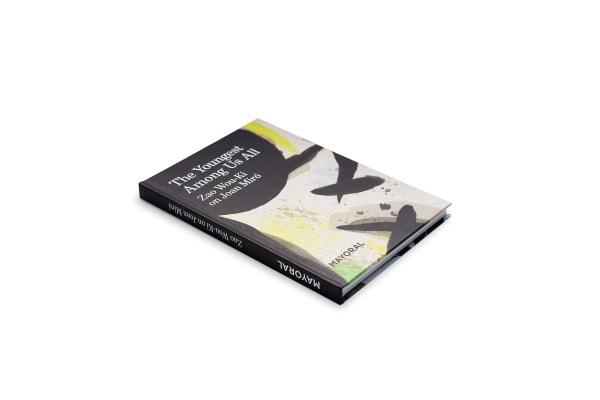
The Youngest Among Us All: Zao Wou-Ki on Joan Miró
2021Hard cover, 106 pagesRead more
Publisher: Mayoral Investigació
Dimensions: 23.9 x 17 x 1.5 cm -
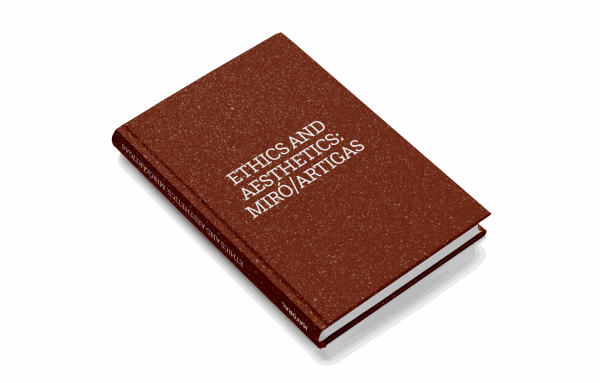
Ethics & Aesthetics: Miró / Artigas
2018Hardcover, 165 pagesRead more
Publisher: Mayoral Investigació
Dimensions: 60 x 30 cm -
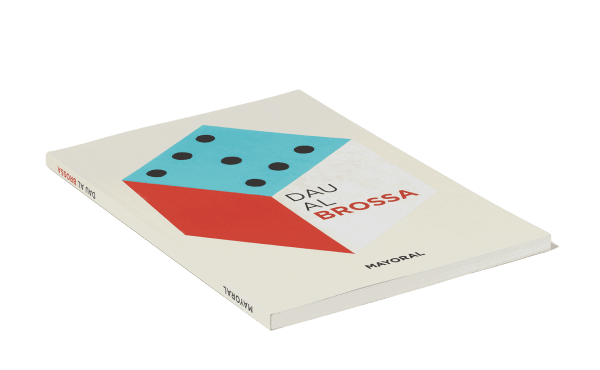
Dau al Brossa
2016Softcover, 139 pagesRead more
Publisher: Mayoral Investigació
Dimensions: 30 x 21 cm -

Art Revolutionaries
2016Hardcover, 253 pagesRead more
Publisher: Mayoral Investigació
Dimensions: 30x60 cm
-

Miró’s Studio
2016Hardcover, 287 pagesRead more
Publisher: Mayoral Investigació
Dimensions: 31 x 23.5 cm -
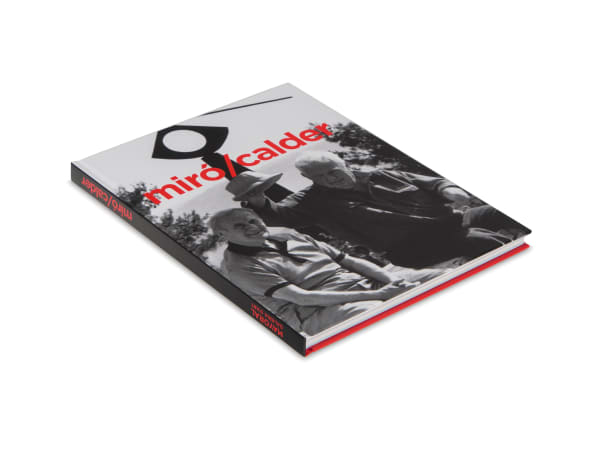
Miró / Calder
2014Hardcover, 171 pagesRead more
Publisher: Mayoral Investigació
Dimensions: 31 x 23.5 cm -
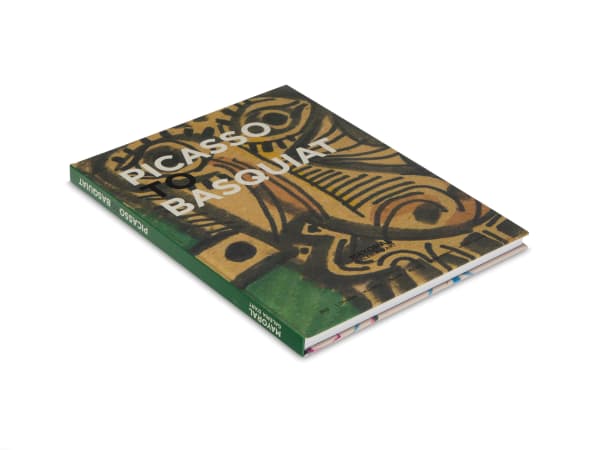
Picasso to Basquiat
2013Hardcover, 135 pagesRead more
Publisher: Mayoral Investigació
Dimensions: 31.7 x 24 cm -

Barcelona Art New York
2012Hardciver, 113 pagesRead more
Publisher: Mayoral Investigació
Dimensions: 32 x 24 cm
-

Tàpies and Miró, a radical collaboration
by Carles Guerra October 11, 2023Antoni Tàpies (1923-2012) and Joan Miró (1893-1983) form an exceptionally genuine tandem, characteristic of 20th-century modernity. Global artists, to a greater or lesser extent, but...Read more -

A Miró masterpiece at Mayoral in Paris
Mayoral presents the exhibition "Miró. The Flaming Heart" at Galeria Mayoral, Paris October 18, 2022Joan miró. Galeria Mayoral, Exhibition, Galeria MayoralRead more -

Conversation between Vicenç Altaió and Blanca Llum Vidal (CATALAN)
Vicenç Altaió and Blanca Llum Vidal talks about "Miró and Ten Catalan Poets of Today" at Galeria Mayoral, Barcelona May 3, 2022Joan Miró, 10 catalan poets, Galeria MayoralRead more -

Un hommage à Pierre Matisse : une conversation entre Claudine Grammont et Elise Lammer modérée par Siân Folley
Claudine Grammont, Elise Lammer and Siân Folley talks about the exhibition "Un hommage à Pierre Matisse" at Galeria Mayoral, Paris November 19, 2021An Hommage to Pierre Matisse, Galeria Mayoral, Mayoral, Barcelona, Paris, Tàpies, Miró, millares, Canogar, Rivera, Saura, ExhibitiomRead more -

Pierre Matisse and the Spanish avant-garde | Elise Lammer
Elise Lammer, curator of "Pierre Matisse and the Spanish avant-garde" talks about the exhibition at Galleria Mayoral, Paris-Barcelona September 11, 2021It is not rare today to witness the same artist evolving across multiple galleries over the course of their career. Typically an artist would enter...Read more -

Conversación entre Alfonso de la Torre y Elvira Maluquer con la participación de Jordi Mayoral (SPANISH)
Jordi Mayoral talks with Alfonso de la Torre and Elvira Maluquer on the exhibition "Abstract Nature" at Galeria Mayoral, Barcelona September 2, 2021Con motivo de la inauguración de la exposición «Naturaleza abstracta»: Jordi Mayoral (JM): Per a nosaltres és una alegria inaugurar l’exposició «Naturalesa abstracta» amb...Read more -

Interview with Manuel Cargaleiro | Salomé Zelic
On the ocassion of the exhibition “The Youngest Among Us All: Zao Wou-Ki on Joan Miró” at Galeria Mayoral, Paris May 22, 2021Interview with Manuel Cargaleiro by Salomé Zelic * Text written for the catalogue of the exhibition “The Youngest Among Us All: Zao Wou-Ki on Joan...Read more -

The Recollections of Françoise Marquet-Zao | Yann Hendgen
Yann Hendgen talks about Françoise Marquet-Zao, the Zao Wou-Ki's partner on the occasion of the exhibition " “The Youngest Among Us All: Zao Wou-Ki on Joan Miró”, at Galeria Mayoral, Paris May 21, 2021The Recollections of Françoise Marquet-Zao Remarks compiled by Yann Hendgen * Text written for the catalogue of the exhibition “The Youngest Among Us All: Zao...Read more -

Interview with Emmanuel Guigon | Jordi Mayoral
On the ocassion of the exhibition “The Youngest Among Us All: Zao Wou-Ki on Joan Miró” at Galeria Mayoral, Paris May 21, 2021Interview with Emmanuel Guigon by Jordi Mayoral * Text written for the catalogue of the exhibition “The Youngest Among Us All: Zao Wou-Ki on...Read more -

Interview with Joan Punyet Miró | Salomé Zelic
On the ocassion of the exhibition “The Youngest Among Us All: Zao Wou-Ki on Joan Miró” at Galeria Mayoral, Paris May 21, 2021Interview with Joan Punyet Miró by Salomé Zelic * Text written for the catalogue of the exhibition “The Youngest Among Us All: Zao Wou-Ki on...Read more -

Zao Wou-Ki and Joan Miró: Aesthetic Affinities | Salomé Zelic
Salomé Zelic, curator of “The Youngest Among Us All: Zao Wou-Ki on Joan Miró”, speaks about Zao Wou-Ki and Joan Miró May 12, 2021Zao Wou-Ki and Joan Miró: Aesthetic Affinities by Salomé Zelic * Text written for the catalogue of the exhibition “The Youngest Among Us All: Zao...Read more -

The birth of signs | Jacques Dupin
Text written on the occasion of the exhibition "Miró-Barceló" at Galeria Mayoral, Barcelona. Inclouded in the catalogue published in 2010. December 3, 2018When we look back on Miró’s long and impressive career and try to understand it in its entirety, the enigma that proves to be the...Read more





